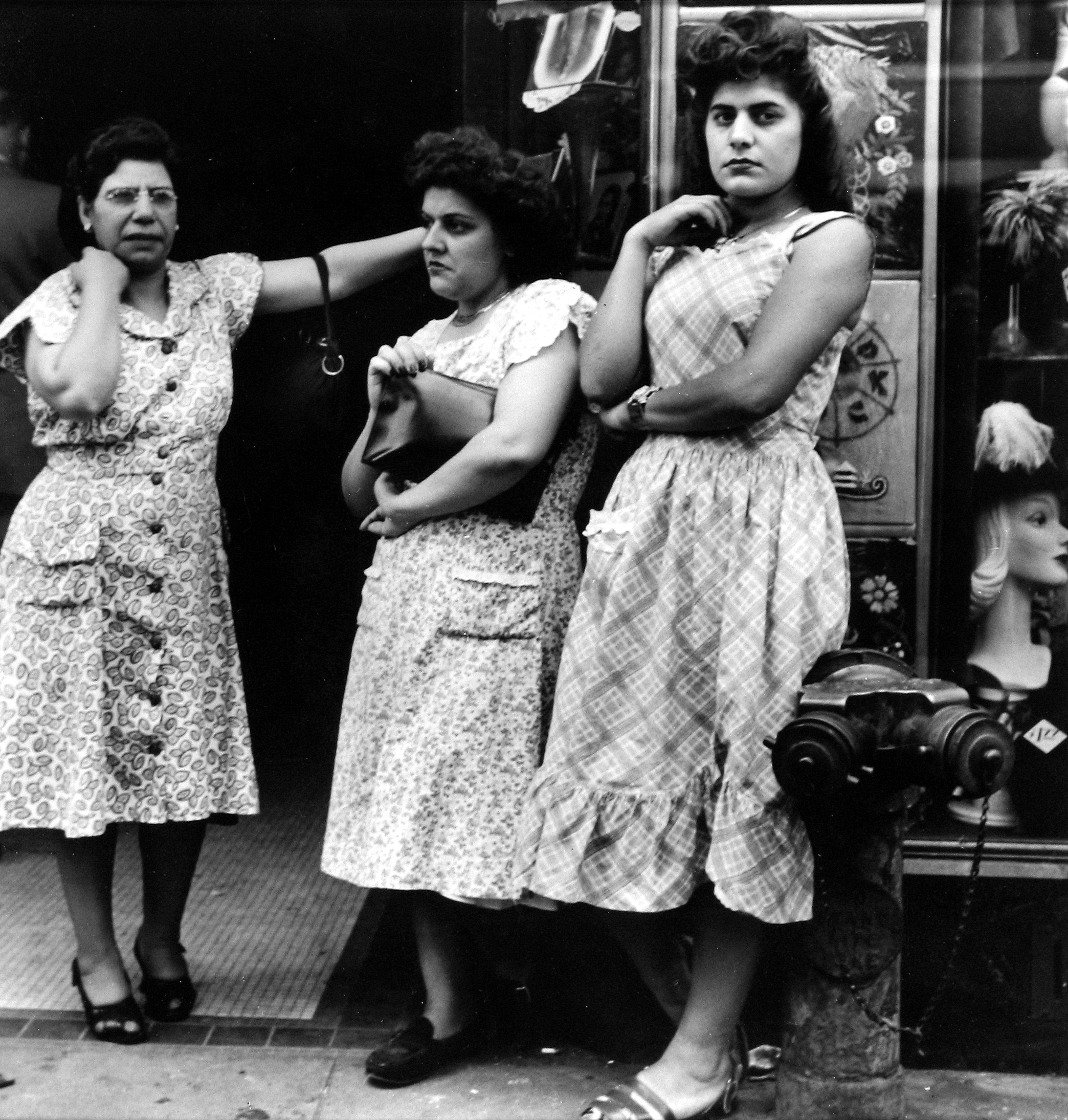
Three Women on Street, 1948
Sy Kattelson
Sy Kattelson (1923-2018) was born in the Bronx and attended Stuyvesant High School. While working as a delivery boy for the Aremac Camera store on 43rd street, he first became aware of the possibility of working professionally as a photographer. A German refugee couple who were the owners of a studio to which he was making a delivery, encouraged him to pursue photography. He later worked in the dark room at Stone-Wright Studio and then became the assistant to one of their in-house photographers. This was followed by his becoming the photographer at Lawrence Studios- where he photographed scenes staged by illustrators who would then use his work as the basis for their illustrations in magazines such as True Story, Cosmopolitan and Romance.
Rather than wait to be drafted, in 1942 he volunteered for the Air Corps as a corporal aerial cartographer, developing film taken from aircraft to assess the success of their bombing runs. At the wars end he was redeployed to France where he worked as an army publicity photographer.
Upon his return to the United States, Kattelson joined the Photo League and studied under Sid Grossman and Paul Strand. His work was represented in the original This is the Photo League exhibit of 1948 and the New Workers exhibit of 1949. He served as an executive member and teacher at the Photo League until it disbanded in 1951. After the disbanding of the League, Kattelson remained close to Grossman and co-edited and printed carbros for Grossman's posthumous 1959 book Journey to the Cape.
From 1953 to 1955 Kattelson worked as a fashion photographer for Glamour and for Fashion and Travel He photographed the first Newport Jazz Festival in 1954. In 1958 he became a color darkroom technician and manager at a large commercial color photography lab. In 1961 he moved to Woodstock, NY where he founded the Tinker Street Cinema, at the time one of the few art house cinemas outside a major urban area.
Kattelson's photographs are included in the collections of the Museum of Modern Art, the National Portrait Gallery, The Museum of Fine Arts in Houston Texas, The Art Institute of Chicago, The New York Transit Museum, The Jewish Museum of New York, The Smithsonian National Museum of African American History and Culture, The National Gallery of Canada and The Musee d'Art Moderne, Saint Etienne, France.